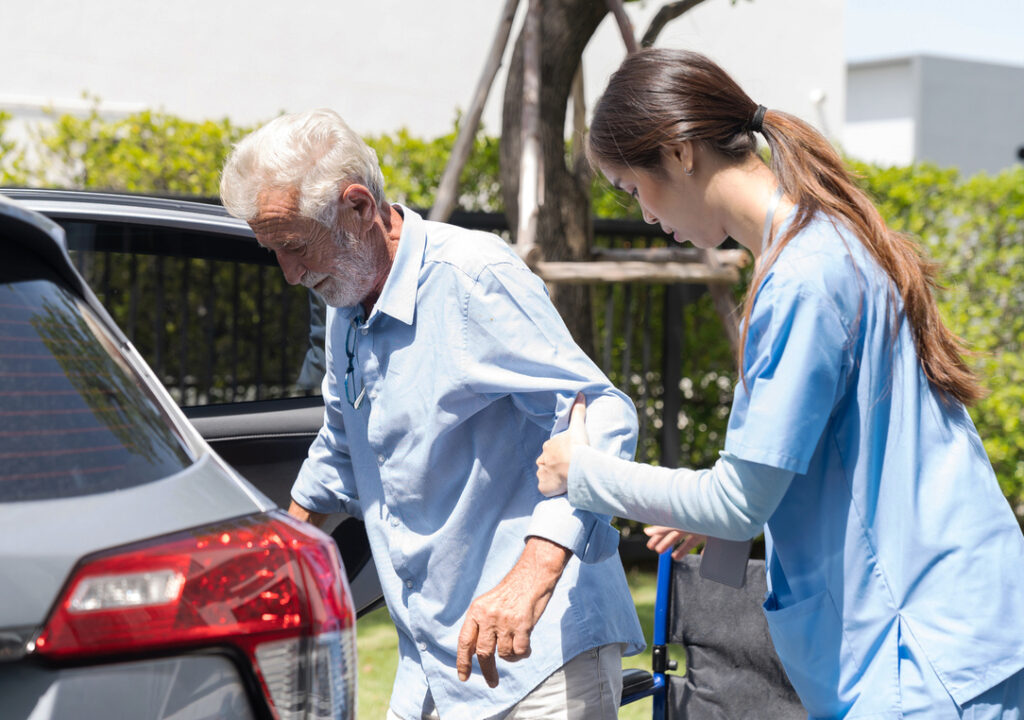The Crucial Link of Aging in Place: Transportation That Works
By Jeff Maltz | 10/1/2025
CEO & Founder
SilverRide
The Transportation Crisis We’re Not Talking About

By 2030, more than 71 million Americans will be over 65, nearly 20 percent of the population.1 Yet policy and service design still center on the general population, leaving growing gaps for those aging with physical, cognitive, or sensory challenges.
Aging in place is what most older adults want. It strengthens communities, reduces reliance on institutional care, and preserves both quality of life and personal dignity. But aging in place isn’t possible without dependable, accessible transportation that connects people to healthcare, social activities, and essential services.
One proven model that integrates transportation into the heart of care is the Program of All-Inclusive Care for the Elderly (PACE). This model of care originated in San Francisco in the early 1970s, providing integrated community-based care for seniors, and expanded significantly in the 1980s.2 PACE blends medical, social, and transportation services to help older adults remain in their homes and has been championed by Jennie Chin Hansen—a nurse, advocate, and national leader who is the immediate past CEO of the American Geriatrics Society.
Earlier in her career, she served as president of the 38-million-member AARP during the development of the Affordable Care Act. Today, she continues advancing this vision as an advisor to SilverRide, lending her decades of expertise to efforts that strengthen mobility as a core element of aging in place. Hansen’s work has consistently reinforced a simple truth: mobility is not an afterthought in elder care; it is a lifeline that makes independence possible.
While models like PACE have proven what’s possible, the reality is that many older adults still face transportation systems that are ill-suited to their needs. From inaccessible transit stops to rigid service definitions that overlook essential support, the gap between aspiration and reality remains wide.
Closing that gap starts with understanding that aging in place requires more than simply getting from point A to point B—it requires transportation that is designed for the full spectrum of needs older adults experience every day.
Aging in Place Requires More Than a Ride
According to AARP, nearly 90 percent of adults over 65 want to remain in their current homes as they grow older.3
Too often, public transit assumes that curb-to-curb service is sufficient. But that framework doesn’t account for someone who can’t walk to the curb, who struggles to navigate a smartphone app, or who can no longer drive due to health conditions. Transportation must meet people where they are, including physically, emotionally, and medically.
The Assisted Mobility Model We Need Now
Assisted mobility is a service model designed for older adults and individuals with cognitive or physical challenges. It doesn’t stop at the curb. It begins at the front door, and ensures riders reach their destination with dignity, safety, and consistency.
At SilverRide, we deliver door-through-door transportation in PACE programs and certain non-emergency medical transportation (NEMT) deployments—meaning credentialed drivers assist riders from inside their home to the vehicle, and from the vehicle into their appointment or activity. In our transit agency partnerships, we adapt services to meet agency requirements, which typically follow curb-to-curb or similar standards.
Local Partnerships in Action: Community-Centered, Culturally Responsive

SilverRide provides assisted mobility in a variety of communities across the country, providing service in a culturally responsive manner that best supports riders. For example, in Southern California’s San Gabriel Valley, SilverRide partners with a PACE program serving primarily Cantonese and Mandarin speaking seniors.
As one rider shared: “The driver walks me to the door and always checks if I’m okay. It feels like someone is really looking out for me. I don’t worry about how I’ll get to the doctor anymore.”
Christian, a SilverRide driver serving the East Boston community, echoes this commitment: “I found my true calling in providing personalized service to older adults and people with disabilities. When I can communicate with Spanish-speaking clients in their own language and help them feel comfortable and dignified, that’s what makes this work meaningful to me.”
PACE programs and community health centers prove that coordinated care and transportation work best when they’re built for the community they serve.
A Legacy of Innovation in PACE
Hansen’s legacy in aging services began at San Francisco-based On Lok Senior Health Services, where she was CEO and worked for nearly 25 years to develop an alternative to institutional care for frail elders. On Lok’s model—providing comprehensive, coordinated healthcare and social services to help older adults remain in their homes—became the prototype for what is now PACE.
Hansen’s continued advocacy reflects this: “Partnerships with cities and counties around the country, combined with the ability to provide services at lower cost compared to alternatives, and to be able to share information in HIPAA-compliant ways, should help to democratize healthcare for many people.”
Why Transit Leaders, Health Systems, and Policymakers Should Care

A study in the American Journal of Public Health found that barriers to NEMT cause 3.6 million individuals to delay or miss care each year, resulting in 25-50 percent of all missed appointments.
When older Americans can’t access care, the costs don’t disappear, they shift and grow. Preventable ER visits, avoidable hospitalizations, and premature institutionalization become far more likely, each carrying steep financial and human costs.4
NEMT services have been shown to generate strong returns by preventing costlier acute care episodes, with estimated annual savings of $537 million when preventive healthcare is accessible.5
SilverRide operates within existing agency and care structures, integrating with client software, syncing with care schedules, and adapting to a wide range of service types—from adult day centers to transportation for cognitively challenged riders and subscription-based services.
This operational approach aligns with federal priorities for mobility equity, including FTA’s Coordinating Council on Access and Mobility (CCAM) initiative, which promotes access to transportation for older adults, individuals with disabilities, and low-income populations. Its current strategic plan specifically calls for “expanding safe access to transit” through coordinated funding and partnerships with 130 federal programs focused on mobility equity.6
Additionally, FTA’s Enhanced Mobility of Seniors and Individuals with Disabilities program (Section 5310) enables more community-based alternatives to traditional transit. These priorities affirm what SilverRide is already delivering: coordinated, person-centered, and accessible mobility designed to keep older adults connected, healthy, and living in their communities.7
The importance of integrating transportation into care is something leaders in the PACE movement have championed for decades. Hansen—whose leadership at On Lok Senior Health Services helped transform a local innovation into the national PACE model—demonstrated how embedding mobility within healthcare delivery keeps older adults healthier, more engaged, and living at home longer.
It’s time to scale what works, and to ensure that the systems designed to serve aging Americans reflect the same innovation, integration, and compassion that PACE programs and community health centers have modeled so well.
Redefining Mobility for a Changing Nation
If we want transportation to serve America’s aging population, we must evolve how we define, procure, and deliver it. That means:
- Making assisted transportation a core service category.
- Requiring qualifications that reflect real-world expertise, supporting individuals with physical, cognitive, and sensory needs.
- Prioritizing impact-based metrics like appointment adherence and rider satisfaction, not just cost.
- Supporting flexible models that integrate with Medicaid waivers, PACE, and wraparound programs.
- Valuing multilingual and culturally responsive service.
Transit leaders, policymakers, advocates, and health providers have a choice: adapt services to the realities of aging America, or risk leaving millions behind. The models exist—now we must prioritize and scale them.
Ready to Drive the Change
The transportation crisis facing older Americans isn’t coming. It’s here. Every day, someone misses care or loses independence simply because they didn’t have the right ride. Americans want to age in place. We can make that possible—but only if mobility is recognized as essential to care.
- Federal Interagency Forum on Aging-Related Statistics Report: Older Americans 2024: Key Indicators of Well-Being ↩︎
- U.S. National Library of Medicine Report on Program of All-Inclusive Care for the Elderly (PACE) ↩︎
- USC Leonard Davis School of Gerontology: The Value of Aging in Place ↩︎
- Economic Benefit of “Modern” Nonemergency Medical Transportation That Utilizes Digital Transportation Networks ↩︎
- NEMT Entrepreneur, NEMT’s Hidden ROI, December 2024 ↩︎
- Federal Transit Administration CCAM Strategic Plan 2023-2026 ↩︎
- Federal Transit Administration FY25 Section 5310 Apportionments ↩︎